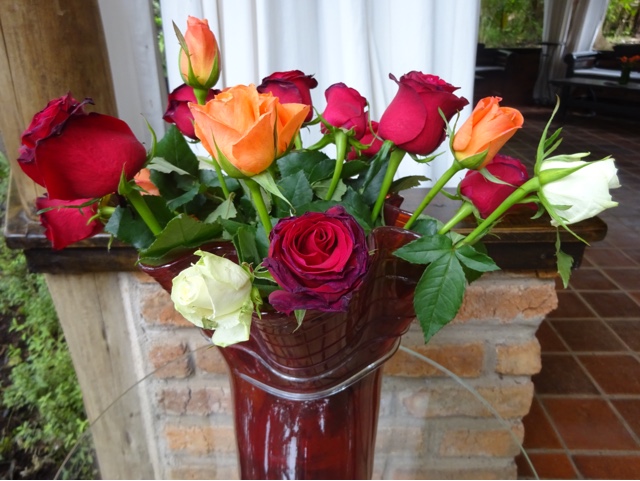We logged over 1,200 miles touring the country, going down from Istanbul along the west coast of the Aegean Sea, east along the Mediterranean coast at the bottom of Turkey and then into Cappadocia.
The country is stunningly beautiful with different mountain ranges (we just looked at them, thank God!), lush olive groves, orange, pear and apple tree farms and all kinds of fruit and vegetable farms and resort towns. Here are some of the places where we stopped:
Gallipoli- I never understood why Mel Gibson produced the movie Gallipoli until I saw the actual battleground and took time to understand the history. I didn't know how bad it was here in the First World War:
The Agean Sea is the only open-water-access going inland from the west coast of Europe up to Russia. During the War, to support the Allies against the German, Turk Ottoman and Arab forces, Australia volunteered to take this passage from the enemy. Unfortunately, they couldn't and failed twice in devastating ways. When all was said and done, over 400,000 lives (Turks, Arabs, Allies) were lost in fighting for this passageway. For Aussies 8,700 died here (a total of 60k Aussies died in WW I and 160k were wounded which was 60% of Australian fighters) and this had a heavy impact on their country for many years. There is a monument of reconciliation which says "To those heroes that shed their blood and lost their lives … You are now lying in the soil of a friendly country. Therefore rest in peace". Nobody wins in war:
Ephesus- further down the Aegean coast are the remains of the Ephesus Roman empire, built in the 10th century B.C.:
The Romans were so advanced that even back in this time, they had water and sewer systems built:
The pipes above were made by hand, spun, fired and individually fitted into each other for miles. They also had their own toilet systems, one for men, another for women:
There was also a library with shelves for 12,000 scrolls:
In this region, we also visited the area that historians theorize was the home of Mary, the mother of Jesus, where she and St. John came to live after the crucifixion. If you believe this theory, Mary and John travelled for about 2 1/2 years to arrive here. Historians are 100% sure that St. John lived and died here. In the 6th century AD there was a Basilica built in his honour that matched the size and opulence of the Hagia Sophia of Istanbul:
Unfortunately, several earthquakes and fires occurred since that time. As well, a lot of stone and columns were used to build newer buildings in the area.
Cappadocia- Turkey has 365 volcanos, all now inactive, with the last eruption occurring back in 200 BC. There's a fascinating history here. First, a brief background if I may.
When a volcano erupts, it sends clouds of dust for hundreds of miles (for example, the Iceland volcano in 2011 sent ashes as far away as London, Paris and Rome). For thousands of years up to 200 B.C., the area of Cappadocia had a lot of ash settling here. These layers accumulated, sometimes 300 feet deep, for literally miles and miles and it became calcified, turning into a type of rock. By about the 10th century AD, wind, water and erosion had 'carved' these rocks into cone formations called 'fairy chimneys'. Believe it or not, people actually built homes into them:
Even their churches were built in these chimneys. There are beautiful original frescos adorning the inside of these cave churches painted directly on the calcified rock. The custodian (for $$) allowed us to take some pictures:
With this calcified rock stretching for miles, entire villages were also built below ground! A fascinating part of Christian history in Turkey- during the 7th Century AD, to protect themselves from Arab invasion and particularly to avoid persecution, Christians built 7- 14 floor deep villages underground:
Each of these underground villages would house up to 2,000 people. Depending on how aggressive the Arabs were, the Christians could live for months underneath the ground in these 'villages'. These sites were only discovered in the 1970s, and so far 36 have been found.
Last but not least, we took a balloon ride at sunrise in Cappadocia:
Although tourism has been dramatically impacted in Turkey (some vendors say down by 90%), the day we went riding there were 100 balloons flying. If you take a close look at the pictures, you can see the calcified hillside.










































